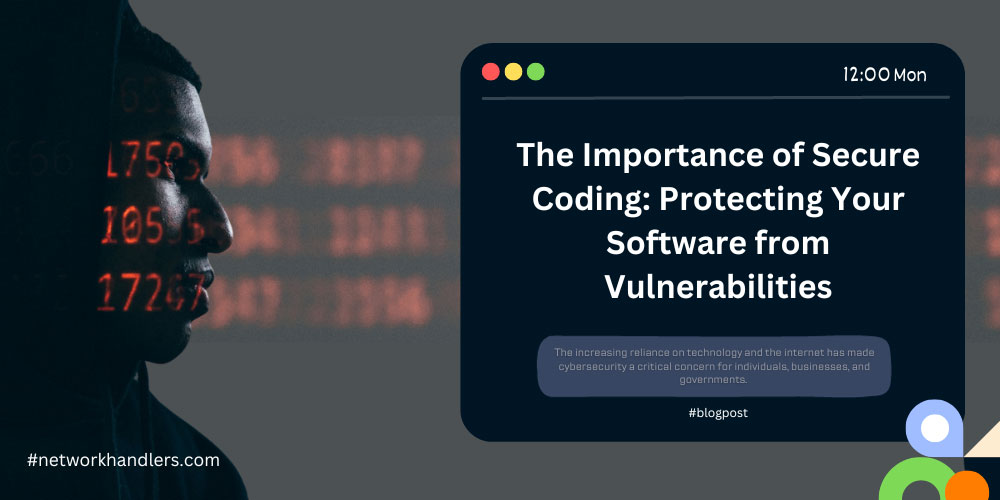In today's digital age, where software plays a pivotal role in our daily lives, the importance of secure coding cannot be overstated. Software is the backbone of modern society, from mobile applications and web platforms to critical infrastructure systems. However, this reliance on software also makes us susceptible to various cybersecurity threats and vulnerabilities. That's where secure coding comes into play – it is a crucial defense mechanism to protect your software from potential breaches and attacks.

Understanding the Threat Landscape
Before delving into the significance of secure coding, it's essential to understand the evolving threat landscape. Cyberattacks have become more sophisticated and frequent, targeting vulnerabilities in software applications to gain unauthorized access, steal sensitive data, or disrupt services. These attacks can have severe consequences, ranging from financial losses to damage to an organization's reputation.

The Role of Secure Coding
Secure coding is a set of practices and techniques that software developers use to write code that is resistant to vulnerabilities and exploits. Here are some compelling reasons why secure coding is essential:

1. Preventing Security Breaches
One of the primary objectives of secure coding is to prevent security breaches. By identifying and addressing potential vulnerabilities during the development phase, you reduce the likelihood of attackers finding and exploiting weaknesses in your software. This proactive approach can save you from the costly aftermath of a breach.
2. Safeguarding User Data
User privacy is a paramount concern in today's digital ecosystem. Secure coding ensures that personal and sensitive data is protected from unauthorized access or disclosure. This not only helps in complying with data protection regulations but also builds trust with your users.
3. Maintaining Business Continuity
Cyberattacks can disrupt your software's functionality, leading to downtime and potential revenue losses. Secure coding practices, such as input validation and error handling, can prevent many common vulnerabilities that attackers exploit to disrupt services. This helps in maintaining business continuity and customer satisfaction.
4. Reducing Legal and Compliance Risks
Many industries are subject to strict regulatory requirements concerning data security and privacy. Secure coding practices help you meet these compliance standards, reducing the risk of legal consequences and hefty fines resulting from non-compliance.
5. Preserving Reputation
A security breach can tarnish your organization's reputation and erode customer trust. By investing in secure coding, you demonstrate a commitment to your users' security, which can enhance your brand's image and credibility.
Best Practices for Secure Coding

To implement secure coding effectively, consider the following best practices:
1. Code Reviews :
Conduct regular code reviews to identify and rectify security flaws.
2. Input Validation:
Ensure that all input is validated to prevent injection attacks like SQL injection and Cross-Site Scripting (XSS).
3. Authentication and Authorization:
Implement strong authentication mechanisms and fine-grained authorization controls.
4. Data Encryption:
Encrypt sensitive data at rest and in transit using robust encryption algorithms.
5. Error Handling:
Implement proper error handling to prevent information leakage that attackers could exploit.
6. Patch Management:
Stay vigilant about security updates and patches for third-party libraries and frameworks.
7. Security Training:
Train your development team in secure coding practices and keep them updated on emerging threats.
8. Security Testing:
Employ automated and manual security testing techniques, such as penetration testing and vulnerability scanning.
Conclusion

In an era marked by an ever-increasing reliance on software, secure coding is not merely a good practice; it's an imperative. The importance of protecting your software from vulnerabilities cannot be overstated, as the consequences of a security breach can be devastating. By embracing secure coding practices and fostering a security-conscious development culture, you can mitigate risks, protect your users, and ensure the long-term success and trustworthiness of your software applications in an increasingly hostile digital landscape.


Comments